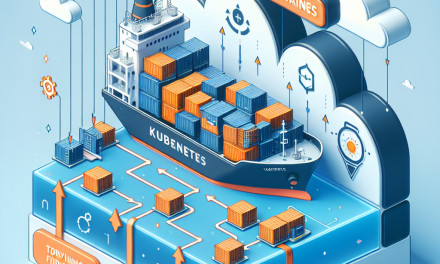In today’s rapidly evolving technology landscape, the necessity for robust application security has never been more critical. As businesses commit to cloud-native architectures, Kubernetes has emerged as the go-to platform for orchestrating containerized applications. While Kubernetes offers many built-in security features, one area that requires special attention is the management of sensitive information—be it API keys, passwords, or certificates. In this article, we will explore Kubernetes Managed Secrets, their importance, best practices for usage, and how to effectively integrate them into your security strategy.
Understanding Kubernetes Secrets
Kubernetes Secrets provide a mechanism to store and manage sensitive information. Unlike ConfigMaps, which are intended for non-sensitive data, Secrets are specifically designed for confidential data, and they automatically ensure the protection of this information.
Secrets can hold various types of sensitive information, such as:
- Passwords
- OAuth tokens
- SSH keys
- TLS certificates
These secrets can be utilized by your applications as environment variables, mounted as files in a volume, or as part of a configuration process.
Why Use Kubernetes Secrets?
1. Enhanced Security
One of the primary reasons to use Secrets is that they provide an additional layer of security. Kubernetes encodes secrets in Base64, which adds a layer of obscurity. While this isn’t encryption per se, it does prevent casual observers from easily reading sensitive information.
2. Fine-Grained Access Control
Kubernetes leverages Role-Based Access Control (RBAC) to enforce granular permissions. You can define who gets to access what, ensuring that only authorized services and users have access to sensitive configurations.
3. Automatic Distribution
Kubernetes facilitates the automatic distribution of secrets across various pods and services, eliminating the need for hardcoding sensitive data directly into application code. This not only enhances security but also simplifies application deployment and scalability.
4. Integration with CI/CD Workflows
Secrets can be seamlessly integrated into your CI/CD pipelines, allowing for secure handling of sensitive data during the build and deployment processes.
Best Practices for Managing Kubernetes Secrets
1. Encrypt Your Secrets
While Kubernetes stores secrets in etcd in base64 encoding, it is recommended to enable encryption at rest for enhanced security. You can configure Kubernetes to use various encryption providers, such as AES and KMS, to protect stored secrets.
2. Limit Access Using RBAC
Use Role-Based Access Control (RBAC) to strictly limit access to secrets. Do not grant more permissions than necessary. Always follow the principle of least privilege when defining roles.
3. Use Namespaces Wisely
Namespaces can help in logically separating your applications and their secrets, depending on the stage of development (dev, staging, prod). This also helps in limiting the exposure of secrets to only those applications that genuinely need access.
4. Regularly Rotate Secrets
Implement a policy for regular rotation of secrets to minimize the risk of unauthorized access due to leaks or compromise. Consider automating this process where feasible.
5. Avoid Hardcoding Secrets
Hardcoding secrets in application code or even in the manifest files is risky. Always use Kubernetes Secrets, environment variables, or mounted volumes as a secure way to pass sensitive information.
6. Monitor and Audit
Regularly monitor and audit access to secrets through Kubernetes logs and RBAC configurations. This can help identify suspicious activity or unauthorized access attempts.
Tools for Managing Secrets
While Kubernetes Secrets offer a solid foundation for managing sensitive information, additional tools can enhance this capability:
- HashiCorp Vault: For dynamic secrets generation and advanced secret management.
- Sealed Secrets: An open-source tool to encrypt Kubernetes Secrets for safe storage in Git repositories.
- Kubernetes External Secrets: A method to integrate Secrets from external sources like AWS Secrets Manager or HashiCorp Vault directly into Kubernetes.
Conclusion
As you deploy containerized applications in Kubernetes, the security of sensitive information cannot be overlooked. By leveraging Kubernetes Managed Secrets, you can ensure that your applications are safeguarded against potential threats.
By following best practices and utilizing the right tools, you can create a secure environment that not only protects sensitive data but also empowers your team to innovate and scale swiftly. In the era of cloud-native technologies, understanding and mastering secrets management can set your applications apart in terms of resilience and security.
At WafaTech, we believe that comprehensive security is a shared responsibility. By implementing well-defined secret management strategies, you not only enhance your application security but also foster a culture of security-first thinking within your teams.





